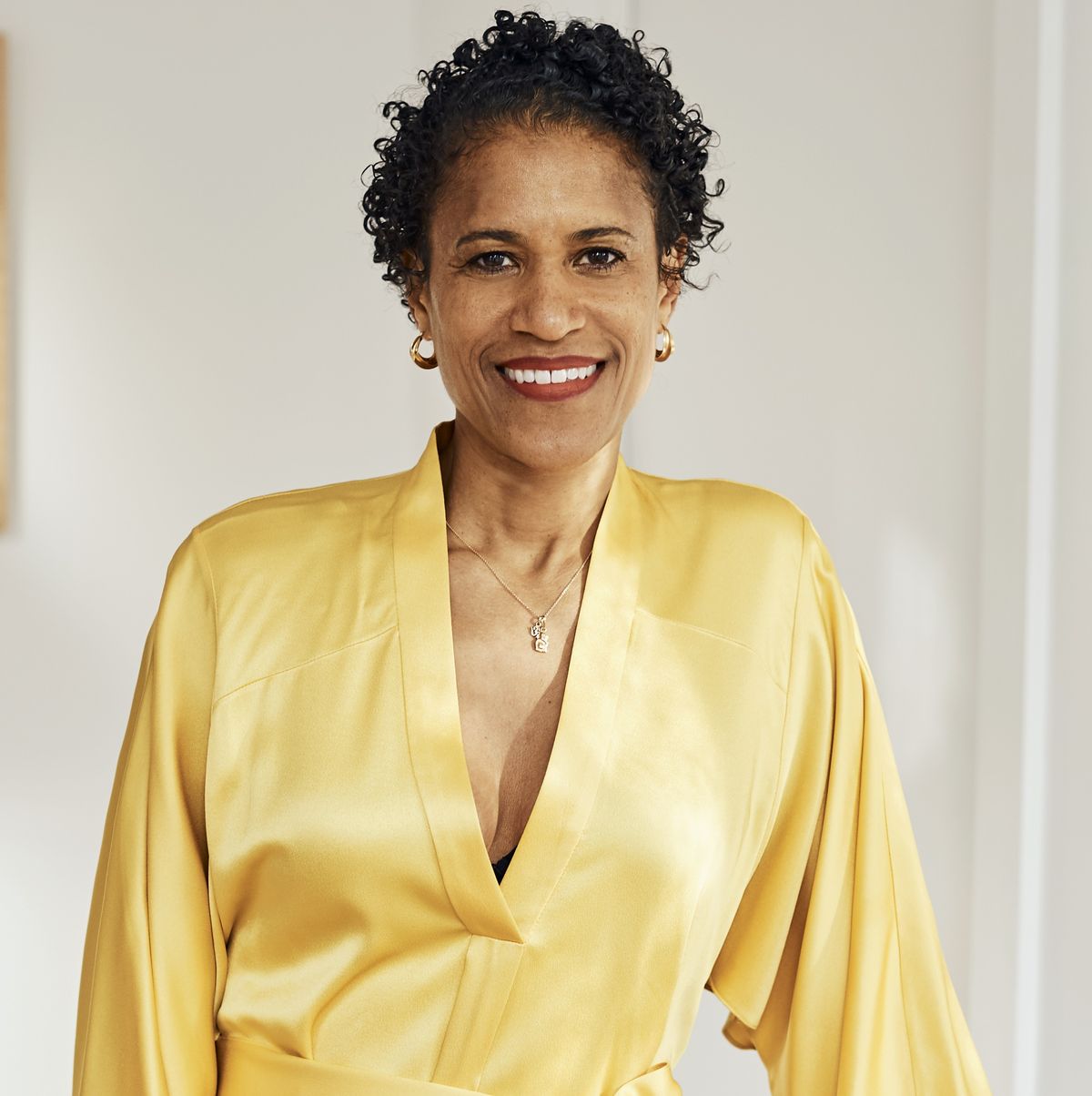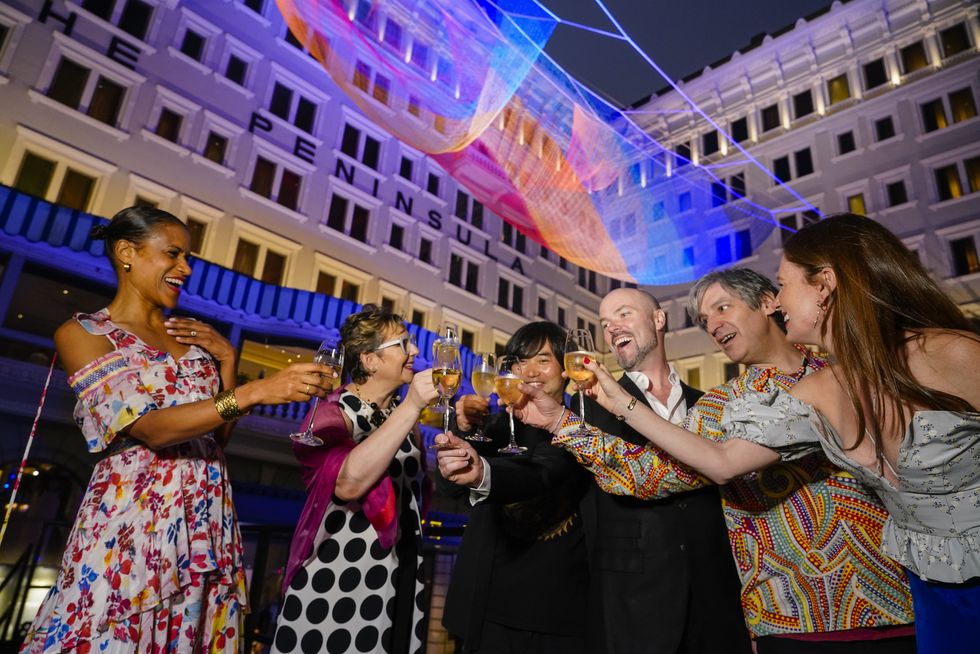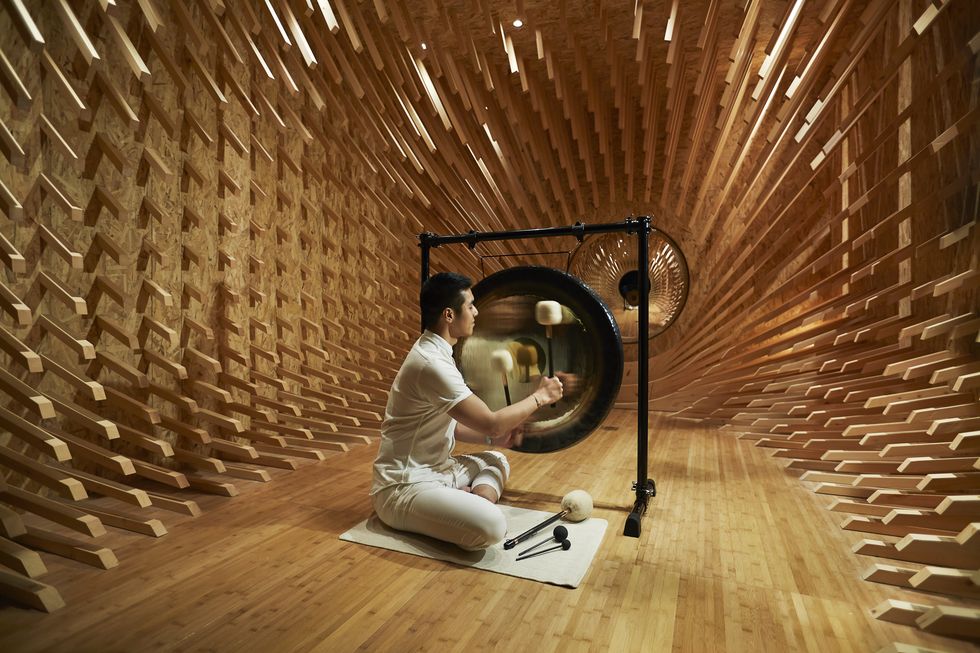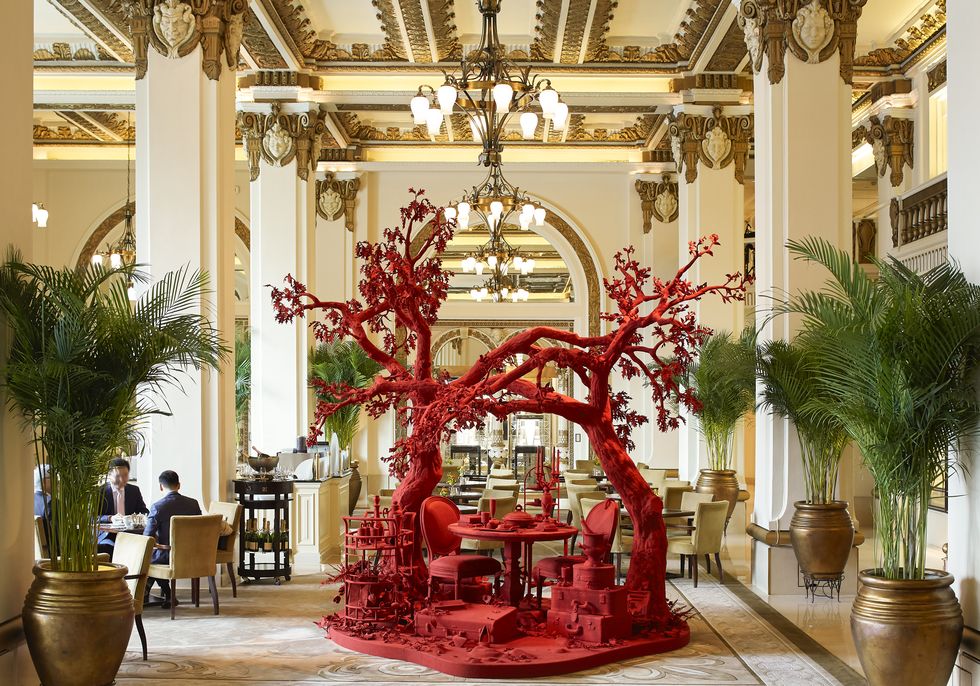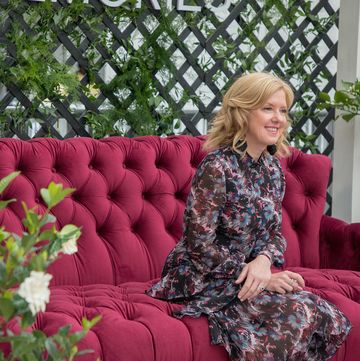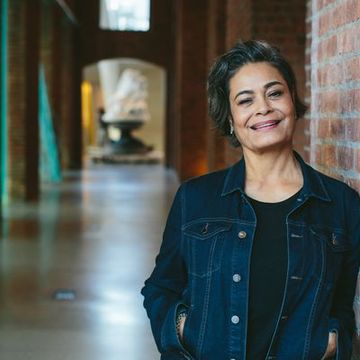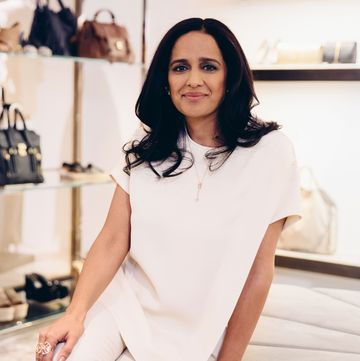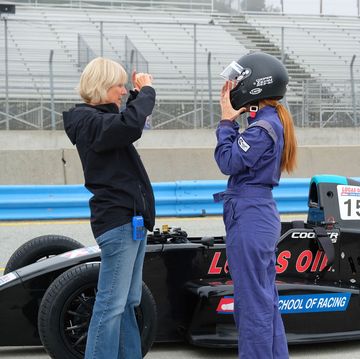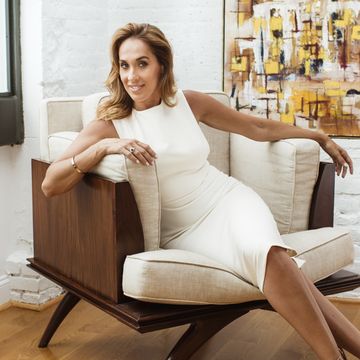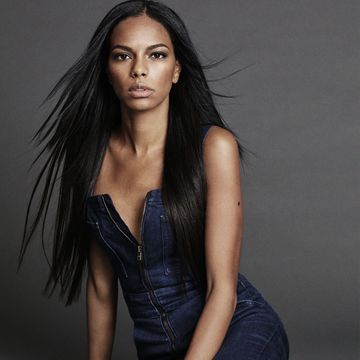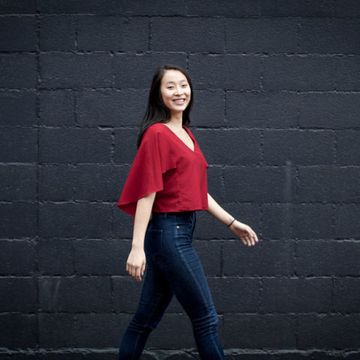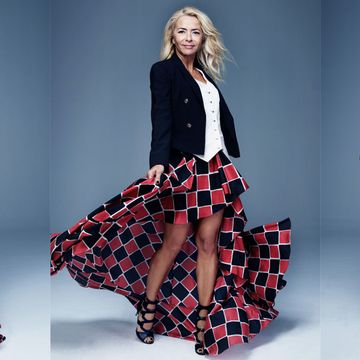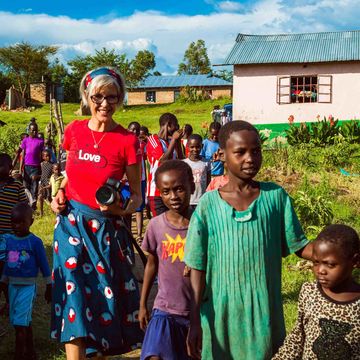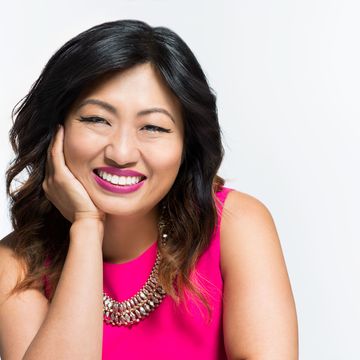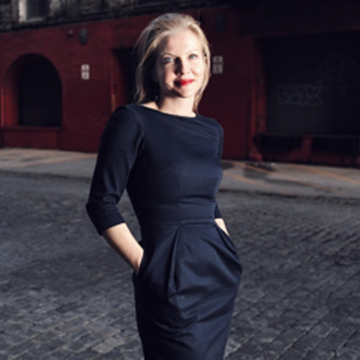Creative polymath Isolde Brielmaier is enjoying a celebratory glass of wine at the Peninsula Hong Kong’s hotel bar. The lauded curator, who works both as Westfield’s national Executive Director of Art, Culture, and Community and an independent curator, has just launched the Peninsula hotel group’s global art program with the exhibition Art in Resonance—an event which set Art Basel Hong Kong in motion. It was the culmination of nearly 18 months' worth of work with co-curator, Bettina Prentice; the New York art world fixtures commissioned and installed four original, museum-grade pieces of work from Janet Echelman, Iván Navarro, Timothy Paul Myers, and Chinese architecture collective, MINAX.
It is no small feat, considering Brielmaier is also managing the critically acclaimed installations at Westfield Mall (Laurie Simmons just showed her work, while Tyler Mitchell is set to exhibit his photography in the fall), teaching Critical Studies within NYU Tisch’s Photography department, serving as the Curator-at-Large of the Tang Museum, sitting on the board of the New Museum, and, most importantly, being a mother to her adorable daughter, Farrah. The former ballerina, who by virtue of her dance training learned discipline at a young age, takes it all in stride. She has mastered how exactly to deal with every curveball a career in the art world as a WOC could throw.
What is a typical day is like for you? You wear so many hats that it must ebb and flow.
I've been trying to think of my work under one umbrella: in the cultural space. And within that, it's curating, education, and cultural strategy. I wake up at 6 A.M., so I have 30 minutes of quiet by myself in the house. I just gather my thoughts and have my coffee. Then the day starts. I will either go to my office at World Trade or sometimes I'll go in to the department at NYU. I drop Farrah at school once or twice a week and then [my husband, Mangue] will drop her [the other days]. When Bettina and I have meetings, I go into her office, but I feel really lucky. One of the things I'm really realizing is, in my work life, autonomy is so important. So it's interesting that I'm able to work wherever I want.
More From ELLE

Meetings are also a big part of what I do, in part because so much of it is about relationships and ideating and I really prefer to do all of that face to face. I know people are really into video conferencing, and I do that a bit if I'm working internationally, but I really love the face-to-face. For this Hong Kong project, all of our regular weekly calls were at 8 P.M., because that's 8 A.M. their time.
So you’ll go into meetings, you develop different exhibitions at Westfield...
Westfield is interesting because there are so many stakeholders. We have a wonderful partnership with Art Production Fund, and then we have this ongoing video program. Some of my job is moving existing projects along. Some of it is trying to present different ideas for projects and then price them out. Then, when you're thinking about presenting art in a more commercial, private-sector context, there's always, What's the impact? There's always an element of justifying what you do, although it's becoming easier. More and more people are realizing how important culture is and how important it is to be engaged in that.
I’m curious to know, since you have so many different roles—was your career path linear or more circuitous?
[My career] was definitely not linear. Early on I felt that I had several interests and several skill sets, and it was really hard because there wasn't a title for it. And now I think we live in an era where it's okay to be a curator–cultural strategist–educator. If anything, I think the lines are blurred so much more, which is so great for people like us that like to do different things. It took me a while to get to this kind of space where I could wear these many hats comfortably on one head. Usually with the idea of a curator, you were doing it in-house, hoping to build your way up to some of the coveted museum positions. And I worked in-house. I was at Guggenheim, but I'm really at a stage in my life now where I want that sense of freedom.
How do you seek out your independent curator jobs?
I think through hard work—and good work—and through relationships, most of them come to me. They come to me in the form of, less an inquiry, but more a conversation. And also posited as an idea of collaboration. That's a really great feeling.
How do you deal with frustrations at work? How do you finesse difficult working situations and survive—and thrive?
When issues or conflicts come up, listening is really important. There are moments where I literally have to bite my tongue because there's part of me that wants to just jump in...But just taking a deep breath and listening—and actually feeling that you don't always have to respond right away. Take it in, confer with a mentor, or bounce things off of a friend, and then respond a little bit later. And that's really hard, because you're dealing with humans and emotion.
Also, picking your battles. That's really vital because I feel like in my heart I'm politicized. I have a very strong sense of what's right and just. That doesn't always mean you've got to step in and duke it out. I feel like I've gotten better with that as I've evolved.
Did co-curating the Art in Resonance exhibit teach you anything new about yourself? Were you scared taking this huge project on?
It's sort of uncharted territory for the Peninsula, but I also think it was uncharted territory in many ways for Bettina and myself. Bettina has some curatorial experience in her past and a lot of PR and communications experience. I have a lot of curatorial experience, but working in this context with this large, global organization was definitely new. Was it scary? No. There definitely were challenges, but it also yields a whole range of new opportunities. It requires a lot of patience. It takes many parts to make a whole—it's not just like, You bring a part and I bring a part, and there you go. That's something my parents taught me: It takes two wholes to make a whole, not two halves.
It was also managing expectations both not only on the Peninsula's part but our part as well. When you commission work, you have a sense of the artist’s practice and the kind of work that they've done, but no one's ever fully prepared for the end product. Iván Navarro’s work was the largest kind of work he’s done in terms of a floor piece. Timothy Paul Myers hadn’t done anything like this before. But it wasn't anything insurmountable. I think with every step, we would have forward movement.
How do you handle the pressure of big projects like this?
I've kind of developed more elasticity or ability to stretch [over the years]. What used to be an eight or a nine is now a three or a four...I can creatively problem solve. I have my inner circle or network, which is for me essential. All women should have their little inner circle of five or six people that they trust, [comprised] of other women that don't judge them, are good listeners, and offer ways of resolving and moving forward, even when it’s hard advice to hear.
And you had your co-curator, Bettina.
One thing that's really important that has come about on this project at Peninsula, because Bettina and I are on the same wavelength, is the idea of collaboration. The idea that you go into something and it's not just you. Even though I love my freedom, working in collaboration with people on projects is the most fulfilling for me right now. Especially with women, too—that collaborative spirit is so important. I think there's room for all of us.
That’s an incredible way of looking at things, but not everyone shares that same mentality. How did you get there?
I've met people—women included—that have looked at me more as a threat than an asset or a potential collaborator. It took me a while to realize that, because that's not how I see other women. If there's somebody that I feel like would be good for a particular thing, I am happy to make the connection or make an introduction. People have done that for me. Holding your cards that close for fear of being usurped by someone when you feel you should be the only one? I mean, it's a big world out there...I can just tell you off the bat, you're not the only one. I think in New York, people tend to think you're at the center of the universe. No one's thinking about Mumbai, or Joburg or Moscow. It's just good to think big picture, and I do believe in paying it forward.
What's one situation in your career that was difficult, but you overcame it and learned to pivot or grow from it?
I come out of the ballet world.... In addition to receiving criticism [externally], my confidence was really tested in that space. The way in which I thought of myself as a young black dancer, I was always conditioned to see myself in relation to most of the other dancers. I've had to shed a lot of that. I think I've come a long way in that department. I joke that you do a triple pirouette on stage and you get tons of applause. But you're in the studio practicing, and you do a triple pirouette and nobody sees it. In a sense, it doesn't really matter. But how do you switch your thinking so that every single time you do a triple pirouette you know in your heart, Damn, that was good, and that counts?
How you stand up for yourself with regards to money or a negotiation of power?
I try to stand with, stand in myself, as opposed to standing up for myself. It's going back to knowing your worth, knowing what you bring to your table, knowing what your currency is, and using that as your vehicle and your tools in moments of challenge or conflict, or negotiation. Rather than be like, "Well, I'm not going to do this and I'm not going to do that," say, "You know what? Let me tell you what works for me." It's switching your thinking. Being like, "I'm not going to take that," feels more defensive, and it's almost like I'm handing over my power, versus, "Okay, thank you for sharing that with me. I want to think about this a little more. I can tell you two key points that really work with me. Let me give it some thought, talk to my team and I'll circle back to you"—I've taken my power back, I'm controlling my narrative. I can't control anybody else's.
That's one, and then the other one is, "That's interesting, but that budget seems a little small. My typical range is X, Y, and Z, but let me think about the deliverables that you're asking for and I'll circle back to you, let me talk to my team." Even if "my team" is just me at the end of the day. Polite never entered into it. I don't want to talk about manners, we're talking about a salary. This is about me taking in your information and figuring out what works for me, then coming back to the table.
Marjon Carlos is a journalist, editor, and public speaker, living and working in New York.
